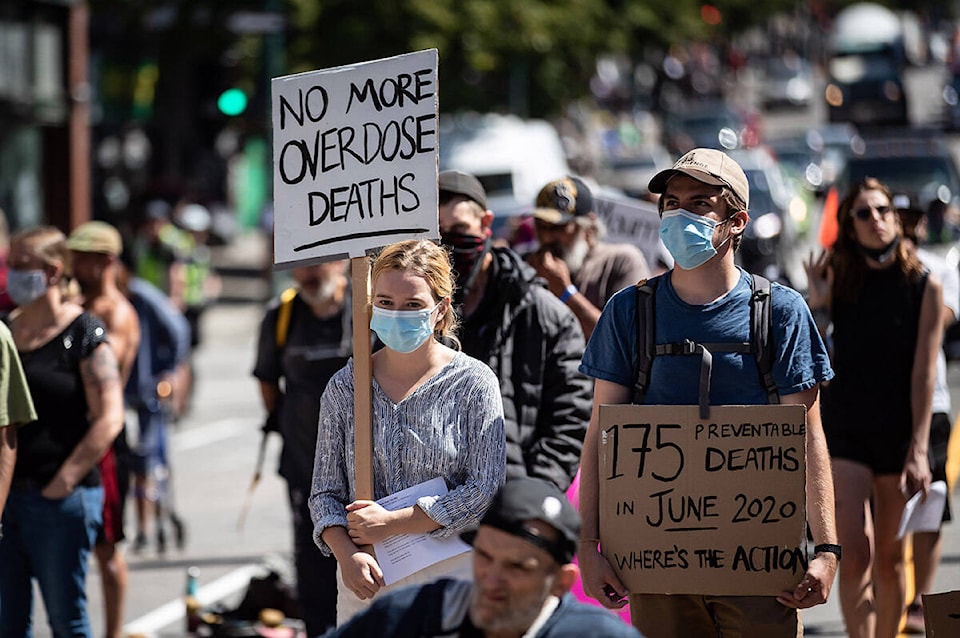Another 165 lives were lost to B.C.’s toxic drug supply in March.
The number marks a small decrease from 174 deaths in February and 207 in January, but is no less concerning according to B.C.’s chief coroner.
“The volatile illicit market remains unreliable and unpredictable,” Lisa Lapointe said in a news release May 3.
Expedited toxicology testing revealed 94 per cent of returned drug samples in March contained fentanyl or its analogues. And the concentration of the deadly substance is only increasing. From November 2021 to March 2022, the BC Coroner found 19 per cent of post-mortem toxicology results had extreme fentanyl concentrations, compared to 13 per cent from April 2020 to October 2021, and eight per cent from January 2019 to March 2020.
The detection rate for benzodiazepines, which don’t respond to naloxone, also remains high. More than 30 per cent of samples in March tested positive for the drugs, down from 52 per cent in January, but up from 15 per cent two years prior.
READ ALSO: 174 British Columbians – 6 under the age of 19 – died of toxic drug poisonings in February
Previously undetected substances, such as the tranquilizer flualprazolam are also being found in increasing numbers, according to the BC Coroner’s report.
In the first three months of 2020, 548 people died from toxic drug poisoning. That’s a small increase from 535 deaths during the same period in 2021, and a marked jump from 277 and 297 deaths in 2020 and 2019, respectively.
Everyone who died in March was between the ages of 19 and 69, with the majority of deaths affecting those aged 30 to 49.
The most heavily impacted health regions were Fraser with 61 deaths, Vancouver Coastal with 44 deaths, and Vancouver Island with 41 deaths.
The majority of deaths continue to occur in private residences, with 57.3 per cent reported as such in March. Another 23.3 per cent of people died in a different type of residence – such as a hotel, rooming house or shelter – and 3.7 per cent died in a public building or bathroom. A small fraction of people died in correctional or medical facilities, a workplace, or an unknown place.
There have been no deaths reported at supervised consumption or drug overdose prevention sites, according to the BC Coroner. It also said there is no indication that prescribed safe supply is contributing to illicit drug deaths.
READ ALSO: B.C advocates push back as Health Canada mulls lower-than-requested legal drug possession
READ ALSO: ‘Death penalty situation’: 6 years ago, B.C. declared toxic drug poisonings a health emergency
@janeskrypnek
jane.skrypnek@bpdigital.ca
Like us on Facebook and follow us on Twitter.
